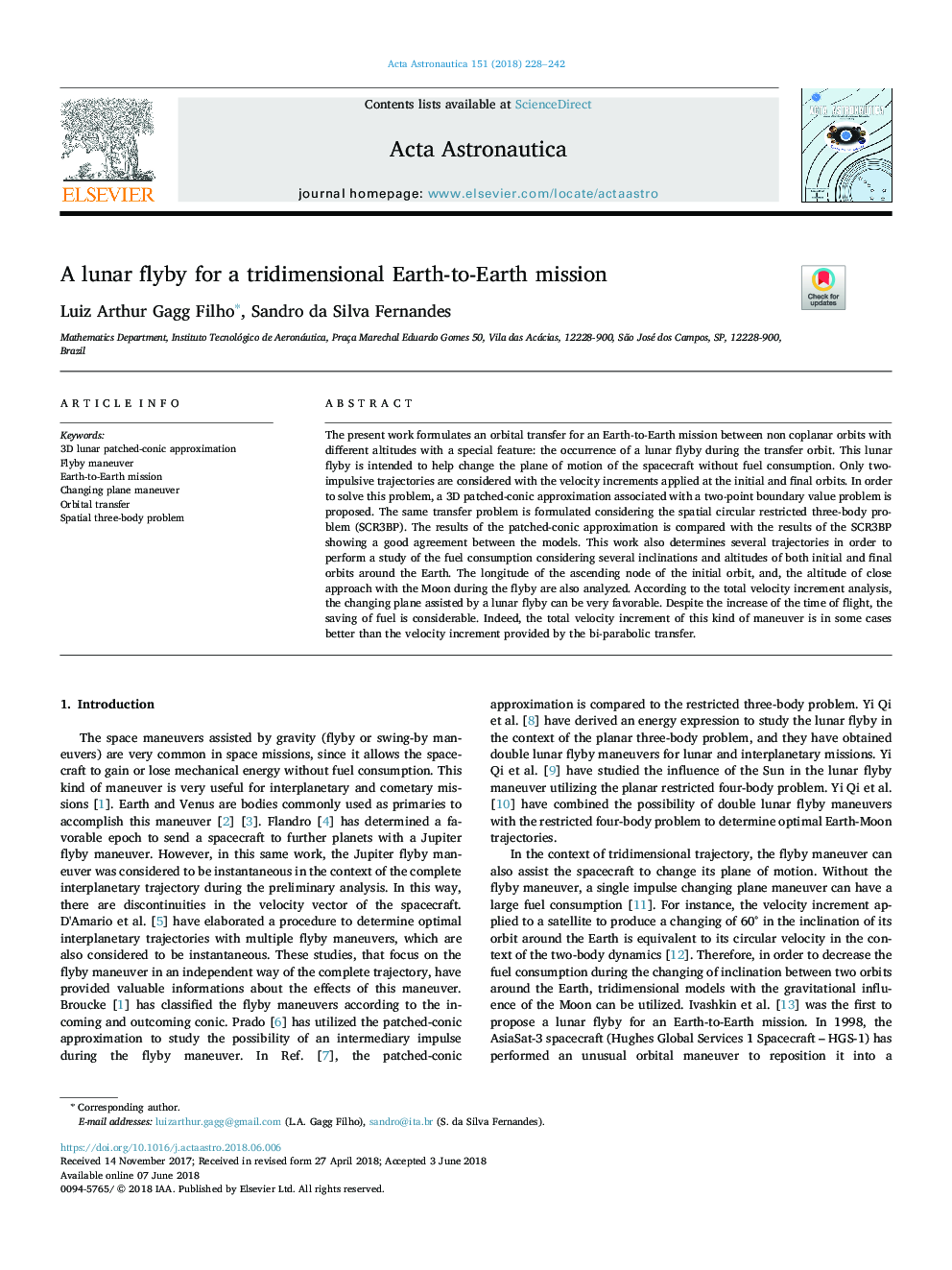| Article ID | Journal | Published Year | Pages | File Type |
|---|---|---|---|---|
| 8055399 | Acta Astronautica | 2018 | 15 Pages |
Abstract
The present work formulates an orbital transfer for an Earth-to-Earth mission between non coplanar orbits with different altitudes with a special feature: the occurrence of a lunar flyby during the transfer orbit. This lunar flyby is intended to help change the plane of motion of the spacecraft without fuel consumption. Only two-impulsive trajectories are considered with the velocity increments applied at the initial and final orbits. In order to solve this problem, a 3D patched-conic approximation associated with a two-point boundary value problem is proposed. The same transfer problem is formulated considering the spatial circular restricted three-body problem (SCR3BP). The results of the patched-conic approximation is compared with the results of the SCR3BP showing a good agreement between the models. This work also determines several trajectories in order to perform a study of the fuel consumption considering several inclinations and altitudes of both initial and final orbits around the Earth. The longitude of the ascending node of the initial orbit, and, the altitude of close approach with the Moon during the flyby are also analyzed. According to the total velocity increment analysis, the changing plane assisted by a lunar flyby can be very favorable. Despite the increase of the time of flight, the saving of fuel is considerable. Indeed, the total velocity increment of this kind of maneuver is in some cases better than the velocity increment provided by the bi-parabolic transfer.
Keywords
Related Topics
Physical Sciences and Engineering
Engineering
Aerospace Engineering
Authors
Luiz Arthur Gagg Filho, Sandro da Silva Fernandes,
